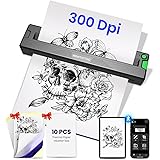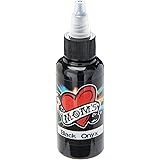Have you ever pondered how some artists cultivate that instantly recognizable, inimitable hand lettering style that sets their work apart and commands commercial success? As Liz Kohler Brown so expertly demonstrates in the accompanying video, developing a signature hand lettering style is not merely an artistic exercise; it is a strategic imperative for creative professionals aiming to monetize their craft and build a distinctive brand presence.
Indeed, a bespoke hand lettering style serves as a powerful differentiator in a crowded digital marketplace. It provides an authentic voice to your creations, from custom fonts to bespoke greeting cards and calendars. Consequently, understanding the methodology behind cultivating such a style, and subsequently leveraging it for commercial gain, is paramount for any designer or artist looking to elevate their portfolio and expand their revenue streams.
The Undeniable Value of a Signature Hand Lettering Style
In an era increasingly dominated by rapidly generated digital content, the intrinsic value of authentic, handmade artistry has surged. A unique hand lettering style transcends mere aesthetics; it embodies a brand’s personality, conveys emotion, and establishes an indelible connection with the audience. This distinctiveness becomes a cornerstone of your artistic identity, offering a clear advantage in securing commissions, winning contests, and establishing long-term client relationships.
Consider the myriad products where bespoke lettering shines: greeting cards, like those Liz designed for Bloom & Wild, the UK’s number one online florist, or the thousands of calendars she has sold, all featuring her unique lettering. Moreover, personal fonts, licensed globally, underscore the vast potential. Such commercial applications are not accidental; they are the direct result of a thoughtfully developed and consistently applied artistic language. A signature lettering style thus transitions from an artistic pursuit to a formidable business asset.
Branding Beyond the Brushstroke
A consistent hand lettering style functions as a visual shorthand for your brand. Imagine if every piece of your work, whether it is a digital graphic or a physical product, carried the unmistakable mark of your unique script. This consistency fosters brand recognition and trust, making your creations immediately identifiable amongst a sea of competitors. It tells a cohesive story, reinforcing your artistic vision across diverse platforms and products.
Furthermore, a unique style minimizes the risk of your work being confused with others, solidifying your intellectual property. As Liz highlights, avoiding direct copying and instead deriving inspiration to make a style “your own” is crucial. This proactive approach to originality not only safeguards your creations but also enhances their perceived value, allowing you to command premium rates for your distinctive design services and products.
Navigating the AI Landscape with Authenticity
The rise of artificial intelligence in design has introduced both opportunities and challenges for artists. While AI tools can generate “perfect” results with astounding speed, they often lack the soulful imperfection and nuanced character inherent in handmade work. Liz insightfully points out that people are currently “craving that” lifelike, rough, and gritty feel that stands in stark contrast to AI’s polished output. Consequently, developing a human-centric, “funky” hand lettering style offers a powerful counter-narrative, attracting clients and customers who specifically seek the authenticity and warmth that only human touch can provide.
This embrace of imperfection, far from being a flaw, becomes a hallmark of uniqueness. It conveys a sense of craft, intention, and individuality that AI struggles to replicate. Therefore, focusing on a style that celebrates these handmade qualities positions artists advantageously within the evolving creative economy.
Unearthing Inspiration: From Vintage Finds to Modern Masterpieces
The genesis of a unique hand lettering style frequently lies in the astute observation and adaptation of existing aesthetic forms. Liz’s methodology emphasizes drawing inspiration from vintage sources, such as old magazines, advertisements, and journals. This approach is strategic; it provides a rich repository of diverse letterforms and historical typographic trends, yet simultaneously compels the artist to reinterpret and synthesize these elements into something entirely novel.
The speaker mentions that approximately “90% of these are in the Creative Commons,” implying that a vast amount of historical typography is accessible for inspirational use without direct copyright infringement concerns, provided it is not directly traced or copied. Nevertheless, the true artistry lies in transformation, in utilizing these vintage cues as a springboard rather than a blueprint.
The Art of Curating Historical Letterforms
To effectively draw inspiration from vintage sources, a discerning eye is required. One should not merely seek out appealing letters but endeavor to understand the underlying structural characteristics, the historical context, and the stylistic nuances that define them. For instance, an Art Nouveau advertisement might feature flowing lines and organic flourishes, while a 1970s magazine could display chunky, geometric letterforms with bold flares. These details, though seemingly minor, contribute significantly to the overall “vibe” of a lettering style.
When curating inspiration, consider creating a digital mood board or an organized collection of screenshots. Group letters by their common stylistic traits—perhaps all sans-serifs, all with unique serifs, or all demonstrating a particular weight or slant. This systematic categorization can aid in identifying patterns and developing a coherent framework for your own emerging style.
From Found Object to Fresh Perspective
The pivotal step in this process is to internalize the essence of your chosen inspiration and then externalize it through your own creative filter. As Liz advises, deliberately selecting sources where not every letter of the alphabet is present forces you to become an active co-creator. This constraint transforms a potential copying exercise into a genuine design challenge, pushing you to extrapolate existing stylistic principles to design the missing letterforms yourself.
Imagine discovering a vintage advertisement with only “A,” “M,” “T,” and “H” in a captivating flared style. Your task would then be to meticulously analyze the construction of these available letters—the angle of the flare, the weight of the strokes, the proportions—and then apply these deduced rules to create a “B” or a “C” that feels authentically part of that same stylistic family. This iterative process of analysis, extrapolation, and creation is what ultimately births a truly unique and personalized hand lettering style, distinctly “you” and free from direct replication.
Crafting Your Custom Letter Sheet in Procreate
The journey from inspirational concept to tangible hand lettering style is best formalized through the creation of a comprehensive letter sheet. Digital platforms like Procreate provide an ideal environment for this endeavor, offering unparalleled flexibility and control. The systematic approach outlined by Liz Kohler Brown ensures consistency and serves as a foundational asset for all future lettering projects.
This digital workflow allows for iterative adjustments, duplication of elements, and the layering of sketches, streamlining a process that might otherwise be laborious. Moreover, the ability to create and reuse guides simplifies the task, enabling artists to concentrate on the creative aspects of letterform development rather than repetitive technical setups. Such efficiency is invaluable for productive creative entrepreneurship.
Setting Up Your Digital Workspace
Initiating your letter sheet in Procreate begins with a new, appropriately sized canvas, perhaps “screen size” for ease of display and manipulation. The first crucial step involves establishing precise letter guides. By drawing a single line and then duplicating and merging it multiple times, a consistent grid can be formed. These guides, later made semi-transparent, act as an invaluable framework for maintaining uniform height, baseline, and x-height across all your letterforms.
It is prudent to duplicate these guide layers immediately after creation. This forethought ensures that if you embark on multiple lettering styles or variations for a client collection, you will not need to reconstruct the guides from scratch. This small organizational step dramatically accelerates future projects, allowing for a more fluid creative process when exploring diverse design ideas.
Mastering Letterform Construction and Consistency
With your guides in place, import your curated inspiration image onto a separate layer, adjusting its transparency. Begin by roughly sketching the entire alphabet. This initial pass, often in a dark, easily visible color, aims to capture the essence of your chosen style. For instance, if your inspiration features a “chunky flare” reminiscent of the seventies, ensure these dominant characteristics are present in your preliminary sketches.
A key efficiency technique involves identifying recurring shapes and elements. Many letters, such as E and F, share vertical bars. The “O” shape is fundamental to “G,” “Q,” and even parts of “U.” By duplicating and manipulating these core shapes, a high degree of consistency across the alphabet can be achieved with significantly less effort than redrawing each component. This method not only saves time but also inherently builds in the visual similarities that define a cohesive lettering style.
Iteration and Refinement: Embracing the “Funky” Aesthetic
The initial sketching phase is about capturing the “overall feel” rather than achieving perfection. As Liz demonstrates, embracing a “loose and rough” approach is beneficial. This allows for experimentation with elements like combining uppercase and lowercase or deciding on specific fill styles or outlines. For example, if your initial “A” has a sharp angle you dislike, simply round it off. The beauty of digital art is the ease of modification.
As you progress, the reference image can eventually be discarded, enabling you to draw inspiration directly from the letters you have already created. This self-referential approach ensures that the emergent style is truly your own, a synthesis of initial inspiration and personal interpretation. Remember, the goal is not machine-like precision, but a “funky, loose, handmade” aesthetic that authentically resonates with viewers, especially in today’s visually saturated market.
Strategic Monetization: Turning Your Lettering into Lucrative Assets
The ultimate objective of cultivating a unique hand lettering style often extends beyond personal artistic fulfillment; it encompasses the strategic commercialization of your creations. A well-developed letter style transforms into a valuable digital asset, opening numerous avenues for income generation and business growth. From direct product sales to licensing agreements and contest victories, the potential for monetization is extensive and multifaceted.
This entrepreneurial mindset encourages artists to view their lettering not merely as art, but as intellectual property with tangible market value. Consequently, understanding the various platforms and strategies for commercial deployment is as crucial as the artistic development itself. It allows artists to diversify their income and build a sustainable creative career.
Diverse Income Streams for Lettering Artists
A unique hand lettering style unlocks a plethora of commercial opportunities. Firstly, it can be directly applied to physical products. Imagine designing a line of greeting cards, like Liz’s award-winning Minted entries, or creating engaging calendars that sell in the thousands. These products can be sold through personal online shops or via specialized marketplaces. Secondly, the lettering can be developed into a full-fledged font, offered for sale on platforms such as Creative Market or licensed to companies for various applications, including apps and branding. Liz’s “Road Trip Print font” serves as a prime example, having been licensed by Minted for artists to utilize on their cards.
Furthermore, custom lettering can be leveraged for client-based projects, such as logo design for organizations like the Women Create Foundation, which can lead to significant prizes and magazine features. The versatility of a distinct lettering style ensures that it remains a perpetually useful tool in an artist’s commercial toolkit, adaptable across myriad products and services.
The Power of Print-on-Demand for Creative Entrepreneurs
For creative entrepreneurs, print-on-demand (POD) services represent a transformative model for selling products featuring their hand lettering. As Liz elucidates, POD eliminates the logistical burdens of inventory management, printing, shipping, and customer service. This allows artists to focus predominantly on their creative output, generating a diverse range of products—from apparel to home décor—without significant upfront investment or operational overhead.
The strategic advantage of POD lies in its scalability and efficiency. Artists can upload their hand lettering designs once and offer them on a multitude of products, experimenting with different offerings without financial risk. Liz’s extensive review of POD providers, where she spent “several thousand dollars ordering packages and products,” underscores the importance of selecting high-quality partners to ensure customer satisfaction and brand integrity. This model is particularly appealing for those seeking to maximize their art’s reach while minimizing administrative tasks.
Optimizing for Discoverability: SEO for Lettering Styles
Even the most exquisite hand lettering style requires discoverability to achieve commercial success. This is where Search Engine Optimization (SEO) becomes indispensable. By embedding relevant keywords and phrases into product listings, website content, and social media posts, artists can significantly enhance the visibility of their work to potential customers and clients. Liz aptly highlights the importance of attaching “some kind of great SEO term” to your letter style or font, such as “vintage advertisement” or “funky road trip old sign.”
Consider the specific characteristics of your lettering. Is it “retro script,” “modern sans-serif,” “whimsical cursive,” or “hand-drawn display font”? These descriptive terms, coupled with keywords related to its potential applications (e.g., “greeting card font,” “wedding invitation lettering,” “brand logo type”), will significantly improve its ranking in search engine results. This proactive approach to SEO ensures that your carefully crafted lettering style is found by the very people who are actively seeking it.











